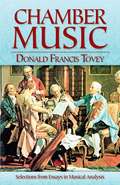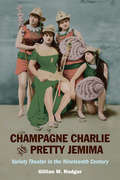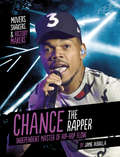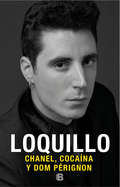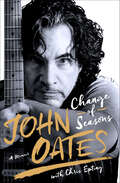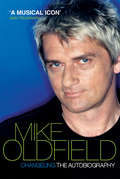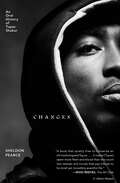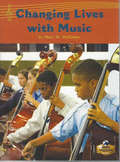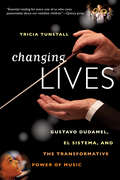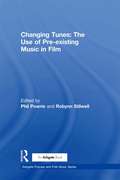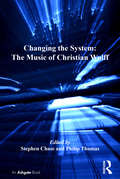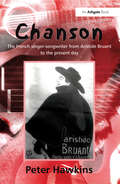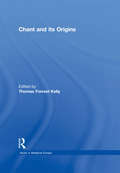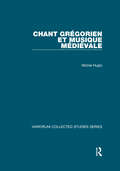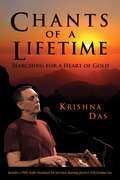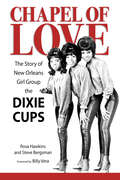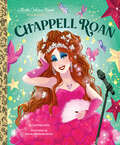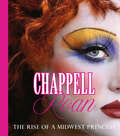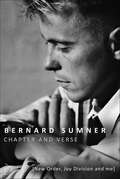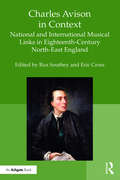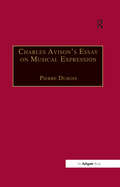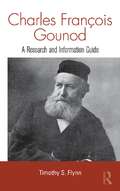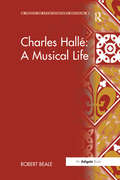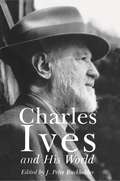- Table View
- List View
Chamber Music: Selections from Essays in Musical Analysis (Dover Books On Music: Analysis Ser.)
by Donald Francis ToveyThis volume features selections from the famous musicologist's acclaimed Essays in Musical Analysis. The contents comprise some of Donald F. Tovey's most important essays, including those on Bach's "Goldberg" Variations and The Art of Fugue as well as considerations of key works by Haydn, Mozart, Beethoven, Schumann, Chopin, and Brahms. Tovey's Essays in Musical Analysis rank among the English language's most acclaimed works of musical criticism. Praised for their acuteness, common sense, clarity, and wit, they offer entertaining and instructive reading for anyone interested in the classical music repertoire.
Chambers: Scores by Alvin Lucier
by Alvin Lucier Douglas SimonChambers is a virtually complete collection of composer Alvin Lucier's major works from 1965 to 1977, interspersed with twelve interviews with the composer by Douglas Simon. Each score is written in prose and may be read by musicians as instructions for performance or by general readers as descriptions of imaginary musical activities. In response to Simon's searching questions, Lucier expands on each composition, not only explaining its genesis and development but also revealing its importance to the vigorously experimental American tradition to which Alvin Lucier belongs.Many of his compositions jolt conventional notions of the role of composer, performer, and listener, and the spaces in which they play and listen. His works are scored for an astonishing range of instruments: seashells, subway stations, toy crickets, sonar guns, violins, synthesizers, bird calls, and Bunsen burners. All are unique explorations of acoustic phenomena – echoes, brain waves, room resonances – and radically transform the idea of music as metaphor into that of music as physical fact.
Champagne Charlie and Pretty Jemima: Variety Theater in the Nineteenth Century (Music in American Life #441)
by Gillian M RodgerIn this rich, imaginative survey of variety musical theater, Gillian M. Rodger masterfully chronicles the social history and class dynamics of the robust, nineteenth-century American theatrical phenomenon that gave way to twentieth-century entertainment forms such as vaudeville and comedy on radio and television. Fresh, bawdy, and unabashedly aimed at the working class, variety honed in on its audience's fascinations, emerging in the 1840s as a vehicle to accentuate class divisions and stoke curiosity about gender and sexuality. Cross-dressing acts were a regular feature of these entertainments, and Rodger profiles key male impersonators Annie Hindle and Ella Wesner while examining how both gender and sexuality gave shape to variety. By the last two decades of the nineteenth century, variety theater developed into a platform for ideas about race and whiteness. As some in the working class moved up into the middling classes, they took their affinity for variety with them, transforming and broadening middle-class values. Champagne Charlie and Pretty Jemima places the saloon keepers, managers, male impersonators, minstrels, acrobats, singers, and dancers of the variety era within economic and social contexts by examining the business models of variety shows and their primarily white, working-class urban audiences. Rodger traces the transformation of variety from sexualized entertainment to more family-friendly fare, a domestication that mirrored efforts to regulate the industry, as well as the adoption of aspects of middle-class culture and values by the shows' performers, managers, and consumers.
Chance the Rapper: Independent Master of Hip-Hop Flow (Movers, Shakers, and History Makers)
by Jamie HudallaChance the Rapper rose to fame in the late 2000s. He collaborates with many other musicians and gives back to his home city, Chicago, Illinois. Learn more about Chance's life as a famous rapper!
Chanel, cocaína y Dom Pérignon
by José María Sanz 'Loquillo'El libro que culmina la saga iniciada con El chico de la bomba. El libro que culmina la saga autobiográfica iniciada con El chico de la bomba; el relato de la vuelta de Loquillo a Barcelona, tras su exitoso paso por el Madrid de los ochenta. El final de la inocencia y la entrada en el negocio musical y sus contradicciones son algunos de los temas de este libro, vistos desde la mirada más personal del autor. «Me gustan las chicas que por condiciónnecesitan tiempo y dedicación,elegantes y bonitas, con liguero de Dior,Chanel nº5, cocaína y Dom Pérignon.» José María Sanz
Change of Seasons: A Memoir
by Chris Epting John Oates“One is struck . . . by how talented [Oates] was [and] how hard he worked at it. It took lots of effort to look that smooth to the tune of 80 million copies.” —Austin American-StatesmanJohn Oates was born at the perfect time, paralleling the birth of rock ‘n roll. Raised in a small Pennsylvania town, he was exposed to folk, blues, soul, and R&B. Teaming up with Daryl Hall in the late 1960s, they developed a style of music that was uniquely their own. John uncovers the grit and struggle it took to secure a recording contract with the legendary Atlantic Records and chronicles the artistic twists and turns that resulted in a DJ discovering an obscure album track that would become their first hit record. This is not your typical rock and roll story. John was focused on creating great music. Along the way he achieved incredible success, battling the ever-changing pop music landscape and coming to terms with complex managerial, business, and personal challenges.Daryl Hall and John Oates have over 20 albums together, more than 60 million records sold, and 29 Top 40 hits. They are the most successful pop duo in the world and members of the Rock and Roll Hall of Fame. And yet John’s story has never been told. Relying on his many hand-written journals, he brings to light many fascinating stories spanning his entire life with a journalist’s eye and a poet’s heart.“Fascinating. . . . Highly recommended for fans of Hall & Oates.” —Library Journal“Plenty of entertaining anecdotes.” —Publishers Weekly“An exceedingly entertaining, somewhat rueful chronicle of his life. . . . Andy Warhol, Michael Jackson, David Bowie, Lou Reed, Quincy Jones, Miles Davis, and Edgar Winter all make appearances.” —Booklist, starred review
Changeling: The Autobiography of Mike Oldfield
by Mike OldfieldBorn without social instincts many people take for granted, brought up in a troubled environment and possessed with an extraordinary musical talent, Mike Oldfield was thrust into the spotlight at the tender age of nineteen. His first album Tubular Bells went on to sell fifteen million copies worldwide and catapulted him into a stardom he was ill-equipped to cope with.From growing up with an alcoholic mother, to his feelings of alienation and struggles with depression, this book takes Mike from his early years, through his staggering fame, his broken marriages, years as a recluse, his rebirth experience at a controversial Exegesis seminar and beyond. Mike Oldfield has been on a journey few of us could ever imagine, and offers a message of hope to anybody who feels they live on the edge of society.
Changes: An Oral History of Tupac Shakur
by Sheldon PearceA New Yorker writer&’s intimate, revealing account of Tupac Shakur&’s life and legacy, timed to the fiftieth anniversary of his birth and twenty-fifth anniversary of his death.In the summer of 2020, Tupac Shakur&’s single &“Changes&” became an anthem for the worldwide protests against the murder of George Floyd. The song became so popular, in fact, it was vaulted back onto the iTunes charts more than twenty years after its release—making it clear that Tupac&’s music and the way it addresses systemic racism, police brutality, mass incarceration, income inequality, and a failing education system is just as important now as it was back then. In Changes, published to coincide with the fiftieth anniversary of Tupac&’s birth and twenty-fifth anniversary of his death, Sheldon Pearce offers one of the most thoughtful and comprehensive accounts yet of the artist&’s life and legacy. Pearce, an editor and writer at The New Yorker, interviews dozens who knew Tupac throughout various phases of his life. While there are plenty of bold-faced names, the book focuses on the individuals who are lesser known and offer fresh stories and rare insight. Among these are the actor who costarred with him in a Harlem production of A Raisin in the Sun when he was twelve years old, the high school drama teacher who recognized and nurtured his talent, the music industry veteran who helped him develop a nonprofit devoted to helping young artists, the Death Row Records executive who has never before spoken on the record, and dozens of others. Meticulously woven together by Pearce, their voices combine to portray Tupac in all his complexity and contradiction. This remarkable book illustrates not only how he changed during his brief twenty-five years on this planet, but how he forever changed the world.
Changing Lives with Music (Fountas & Pinnell LLI Red #Level P)
by Mary McClellanMusic can change people's lives. That's what José Antonio Abreu believes. And he proved it with El Sistema, the music program that has transformed the lives of children all over Venezuela and in more that 25 countries around the world. Children from streets dominated by the gun battles of gang warfare are taken into music schools, given access to music, and taught how to build a better society.
Changing Lives: Gustavo Dudamel, El Sistema, and the Transformative Power of Music
by Tricia Tunstall"Reminds us of how arts education can change lives." --Gary Stager, Huffington Post In this "vivid story" (Economist), Tricia Tunstall "chronicles the origins and growth of Venezuela's acclaimed El Sistema national music education program" (Reed Johnson, Los Angeles Times) and illustrates its overarching goal: to rescue children from the depredations of poverty through music. What began in Venezuela has extended to Los Angeles, New York City, and Baltimore, illustrating that El Sistema is not just a program, it's a movement. Combining firsthand interviews with compelling stories, Changing Lives reveals that arts education can indeed effect positive social change in the United States and around the world.
Changing Tunes: The Use of Pre-existing Music in Film (Ashgate Popular And Folk Music Ser.)
by Robynn StilwellThe study of pre-existing film music is now a well-established part of Film Studies, covering 'classical' music and popular music. Generally, these broad musical types are studied in isolation. This anthology brings them together in twelve focused case studies by a range of scholars, including Claudia Gorbman, Jeongwon Joe, Raymond Knapp, and Timothy Warner. The first section explores art music, both instrumental and operatic; it revolves around the debate on the relation between the aural and visual tracks, and whether pre-existing music has an integrative function or not. The second section is devoted to popular music in film, and shows how very similar the functions of popular music in film are to the supposedly more 'elite' classical music and opera. Case studies in part 1: Eyes Wide Shut, Raging Bull, Brief Encounter, Detective, The Godfather Part III, three versions of the Carmen story (DeMille's, Preminger's and Rosi's), Amadeus, The Birth of a Nation, M: Eine Stadt sucht einen MA rder, Needful Things, Rat Race. Case studies in part 2: various films by AlmodA^3var, Young Frankenstein, Pulp Fiction, Trainspotting, Amelie, High Fidelity, Ghost World, Heavenly Creatures, The Virgin Suicides, and the video Timber by Coldcut.
Changing the System: The Music Of Christian Wolff
by Stephen ChaseChristian Wolff is a composer who has followed a distinctive path often at the centre of avant-garde activity working alongside figures such as John Cage, Merce Cunningham, and Cornelius Cardew. In a career spanning sixty years, he has produced a significant and influential body of work that has aimed to address, in a searching and provocative manner, what it means to be an experimental and socially aware artist. This book provides a wide-ranging introduction to a composer often overlooked despite his influence upon many of the major figures in new music since the 1950s from Cage to John Zorn to the new wave of experimentalists across the globe. As the first detailed analysis of the music of this prolific and highly individual composer, Changing the System: The Music of Christian Wolff contains contributions from leading experts in the field of new and experimental music, as well as from performers and composers who have worked with Wolff. The reception of Wolff's music is discussed in relation to the European avant-garde and also within the context of Wolff's association with Cage and Feldman. Music from his earliest compositions of the 1950s, the highly indeterminate scores, the politically-inspired pieces up to the most recent works are discussed in detail, both in relation to their compositional techniques, general aesthetic development, and matters of performance. The particular challenges and aesthetic issues arising from Wolff's idiosyncratic notations and the implications for performers are a central theme. Likewise, the ways in which Wolff's political persuasions - which arguably account for some of the notational methods he chooses - have been worked out through his music, are examined. With a foreword by his close associate Michael Parsons, this is a valuable addition to experimental music literature.
Chanson: The French Singer-Songwriter from Aristide Bruant to the Present Day (Ashgate Popular And Folk Music Ser.)
by Peter HawkinsEn France, tout finit par des chansons' is the well-known phrase which sums up the importance of chanson for the French. A song tradition that goes back to the Middle Ages and troubadours of the twelfth and thirteenth centuries, chanson is part of the texture of everyday life in France - a part of the national identity and a barometer of popular taste. In this first study of chanson in English, Peter Hawkins examines the background to the genre and the difficulties in defining what is and what is not chanson. The focus then moves to the development of the singer-songwriter of chanson from 1880 to the present day. This period saw the emergence of national icons from Aristide Bruant at the end of the nineteenth century through to internationally recognized musicians such as Jacques Brel and Serge Gainsbourg. Each of these figures used chanson to express the particular moral dilemmas, tragic situations and moments of euphoria particular to themselves and their times. The book provides bibliographies, discographies and details of video recordings for each of the singer-songwriters that it discusses. It is both an essential reference guide to the genre and a useful case history of the adaptation of an ancient form to the demands of the modern mass media.
Chant and its Origins (Music In Medieval Europe Ser.)
by Thomas Forrest KellyThe Latin liturgical music of the medieval church is the earliest body of Western music to survive in a more or less complete form. It is a body of thousands of individual pieces, of striking beauty and aesthetic appeal, which has the special quality of embodying, of giving voice to, the words of the liturgy itself. Plainchant is the music that underpins essentially all other music of the middle ages (and far beyond), and is the music that is most abundantly preserved. It is a subject that has engaged a great deal of research and debate in the last fifty years and the nature of the complex issues that have recently arisen in research on chant are explored here in an overview of current issues and problems.
Chant grégorien et musique médiévale (Variorum Collected Studies)
by Michel HugloThis is the third in a set of four collections of articles by Michel Huglo to be published in the Variorum series. It brings together the studies of Gregorian chant and of later monophonic and polyphonic additions to the earlier repertory that occupied Huglo in the second phase of his research. Represented here are articles on the Kyrie, the introit tropes of St-Gall, an elegy for William the Conqueror (d. 1087), the versus by Venantius Fortunatus for the cathedral of Paris, the liturgical dramas of Fleury, early organum, the Mass of Tournai, and, finally, the Requiem by Eustache Du Caurroy. Ce volume des articles de Michel Huglo est le troisième de la série de quatre dans la collection Variorum. Il réunit des études sur le chant grégorien et sur les additions de pièces monodiques ou polyphoniques faites au répertoire primitif, sujets qui ont occupé Michel Huglo dans la seconde phase de sa carrière de chercheur. Dans ce volume, le lecteur trouvera des articles sur le Kyrie, les tropes d'introït de St-Gall, l'élégie pour Guillaume le Conquérant (d. 1087), les versus de Venance Fortunat pour la cathédrale de Paris, les drames liturgiques de Fleury, les débuts de l'organum, la Messe de Tournai, et finalement le Requiem d'Eustache Du Caurroy.
Chants of a Lifetime: Searching For A Heart Of Gold
by Krishna DasChants of a Lifetime offers an intimate collection of stories, teachings, and insights from Krishna Das, who has been called "the chant master of American yoga" by the New York Times. Since 1994, the sound of his voice singing traditional Indian chants with a Western flavor has brought the spiritual experience of chanting to audiences all over the world. He has previously shared some of his spiritual journey through talks and workshops, but now he offers a unique book-with-audio download combination that explores his fascinating path and creates an opportunity for just about anyone to experience chanting in a unique and special way. Chants of a Lifetime includes photos from Krishna Das’s years in India and also from his life as a kirtan leader—and the audio that is offered exclusively in the book consists of a number of "private" chanting sessions with the author. Instead of just being performances of chants for listening, the recordings make it seem as if Krishna Das himself is present for a one-on-one chanting session. The idea is for the listener to explore his or her own practice of chanting and develop a deepening connection with the entire chanting experience.
Chapel of Love: The Story of New Orleans Girl Group the Dixie Cups (American Made Music Series)
by Steve Bergsman Rosa HawkinsIn 1963, sisters Barbara Ann and Rosa Hawkins and their cousin Joan Marie Johnson traveled from the segregated South to New York City under the auspices of their manager, former pop singer Joe Jones. With their wonderful harmonies, they were an immediate success. To this day, the Dixie Cups’ greatest hit, “Chapel of Love,” is considered one of the best songs of the past sixty years. The Dixie Cups seemed to have the world on a string. Their songs were lively and popular, singing on such topics as love, romance, and Mardi Gras, including the classic “Iko Iko.” Behind the stage curtain, however, their real-life story was one of cruel exploitation by their manager, who continued to harass the women long after they finally broke away from his thievery and assault. Of the three young women, no one suffered more than the youngest, Rosa Hawkins, who was barely out of high school when the New Orleans teens were discovered and relocated to New York City. At the peak of their success, Rosa was a naïve songstress entrapped in a world of abuse and manipulation. Chapel of Love: The Story of New Orleans Girl Group the Dixie Cups explores the ups and downs of one of the most successful girl groups of the early 1960s. Telling their story for the first time, in their own words, Chapel of Love reintroduces the Louisiana Music Hall of Famers to a new audience.
Chappell Roan: A Little Golden Book Biography (Little Golden Book)
by Cat ReynoldsCelebrate the rise of pop sensation and singer-songwriter Chappell Roan with this collectible Little Golden Book, which tells her inspiring story alongside beautiful full-color illustrations!It&’s being true to herself and creating the music she loves that has made Chappell Roan the artist she is today.Chappell Roan: A Little Golden Book Biography brings the story of this talented singer-songwriter to life—from her early beginnings in Missouri to her awesome live performances at music festivals. Chappell proudly shares her true self with the world and her fans love her for it!Little Golden Book biographies feature the iconic gold-foil design and share the life stories of extraordinary artists, world leaders, performers, and athletes including:Harry StylesTaylor SwiftZendayaBeyoncéLady Gaga
Chappell Roan: The Rise of a Midwest Princess
by Jennifer Keishin Armstrong Dibs Baer Patrick Crowley Izzy Grinspan J'Na Jefferson Ilana Kaplan Samantha OlsonGet an insider&’s look at Chappell Roan&’s rise to pop femininomenon status in this luxe hardcover gift book100+ stunning photos and clued-in commentary from top music and culture writers explore the power of the &“Hot to Go&” singer&’s music, style and cultural influenceChappell Roan broke through as a superstar, thanks to a genuinely new blend of powerhouse vocals, queer pride and drag queen style. Her appeal is clear: the songs are bouncy anthems that are unabashedly joyful, and her campy looks are a perfect mix of burlesque star and beauty queen. This stunning gift book immerses you in Chappell&’s world, examining her rise to fame, how she established herself so seemingly quickly, and how she is challenging expectations while honoring gay women&’s impact on pop culture.Inside you&’ll find: Chappell&’s many striking performance ensembles and interviews with the stylists she&’s worked with to create her signature aesthetic and stage personaInspiration for her chart-topping hits from &“Good Luck Babe&” to &“Pink Pony Club&” and what makes her music so relatable The impact of her ballooning fame on her mental health and how she&’s grappled with toxic fan culture and the pressThroughout the photo-packed pages in this stunning coffee table book, fans will follow Chappell&’s journey from a sheltered Midwestern upbringing to opening for stars like Olivia Rodrigo to her status today as a beloved pop icon. It&’s the perfect gift for any fan!
Chapter and Verse: New Order, Joy Division and Me
by Bernard SumnerBernard Sumner pioneered the post-punk movement when he broke onto the scene as a founding member of Joy Division, and later as the front man of New Order. Heavily influencing U2 and The Cure while paving the way for post-punk revivalists like Interpol, Sumner's has left an indelible mark on punk and rock music that endures to this day.Famously reluctant to speak out, for the first time Sumner tell his story, a vivid and illuminating account of his childhood in Manchester, the early days of Joy Division, and the bands subsequent critical and popular successes. Sumner recounts Ian Curtis' tragic death on the eve of the band's first American tour, the formation of breakout band New Order, and his own first-hand account of the ecstasy and the agony of the 1970s Manchester music scene.Witty, fascinating and surprisingly moving, Chapter and Verse is an account of insights and spectacular personal revelations, including an appendix containing a complete transcript of a recording made of Ian Curtis experiencing hypnotic regression under the Sumner's amateur guidance and tensions between himself and former band member Peter Hook.
Charles Avison in Context: National and International Musical Links in Eighteenth-Century North-East England
by Roz Southey Eric CrossDespite recent interest in music-making in the so-called ’provinces’, the idea still lingers that music-making outside London was small in scale, second-rate and behind the times. However, in Newcastle upon Tyne, the presence of a nationally known musician, Charles Avison (1709-1770), prompts a reassessment of how far this idea is still tenable. Avison’s life and work illuminates many wider trends. His relationships with his patrons, the commercial imperatives which shaped his activities, the historical and social milieu in which he lived and worked, were influenced by and reflected many contemporary movements: Latitudinarianism, Methodism, the improvement of church music, the aesthetics of the day including new ideas circulating in Europe, discussions of issues such as gentility, and the new commercialism of leisure. He can be considered as the notional centre of a web of connections, both musical and non-musical, extending through every part of Britain and into both Europe and America. This book looks at these connections, exploring the ways in which the musical culture in the north-east region interacted with, and influenced, musical culture elsewhere, and the non-musical influences with which it was involved, including contemporary religious, philosophical and commercial developments, establishing that regional centres such as Newcastle could be as well-informed, influential and vibrant as London.
Charles Avison's Essay on Musical Expression: With Related Writings by William Hayes and Charles Avison
by William Hayes Charles AvisonCharles Avison's Essay on Musical Expression, first published in 1752, is a major contribution to the debate on musical aesthetics which developed in the course of the 18th century. Considered by Charles Burney as the first essay devoted to 'musical criticism' proper, it established the primary importance of 'expression' and reconsidered the relative importance of harmony and melody. Immediately after its publication it was followed by William Hayes's Remarks (1753), to which Avison himself retorted in his Reply. Taken together these three texts offer a fascinating insight into the debate that raged in the 18th century between the promoters of the so-called 'ancient music' (such as Hayes) and the more 'modern' musicians. Beyond matters of taste, what was at stake in Avison's theoretical contribution was the assertion that the individual's response to music ultimately mattered more than the dry rules established by professional musicians. Avison also wrote several prefaces to the published editions of his own musical compositions. This volume reprints these prefaces and advertisements together with his Essay to provide an interesting view of eighteenth-century conceptions of composition and performance, and a complete survey of Avison's theory of music.
Charles Francois Gounod: A Research and Information Guide (Routledge Music Bibliographies)
by Timothy FlynnCharles François Gounod: A Research and Information Guide is an annotated bibliography concerning both the nature of primary sources related to the composer and the scope and significance of the secondary sources which deal with him and his compositions.
Charles Hallé: A Musical Life
by Robert BealeCharles Hall as one of the leading musicians of the nineteenth century and intimate with almost all of the great composers and performers of his time, as well as a friend of the Royal Family and known as much as a pianist and chamber musician as a conductor, in London, throughout the country and abroad, in addition to Manchester. Robert Beale presents a new perspective on Hall life and achievement, constructed mainly from primary sources, which serves to dispel many of the inaccuracies and omissions that have stemmed, to a great extent, from Hall own autobiographical account of 1896. His edited memoirs omit much of the competition and controversy, struggles and disappointments of his career in Manchester, and, indeed, hardly convey the scope of his activities elsewhere. Hall as a key figure in the shift from contemporary toclassical repertory in orchestral concerts and piano performance. Not only did he found the Manchester orchestra, in 1862-3 he also gave the first known cycle of Beethoven's piano sonatas. His early annualrecital series in London marked a new era in the musical history of his time. The formation of the modern 'symphony orchestra' took place during the period of Hall professional life, and he was a pioneer in the process, in both artistic and business terms. Having adopted the role of orchestral conductor when it was itself relatively novel, he became one of the acknowledged masters of the craft over four and half decades - as well as continuing to appear as solo pianist and chamber musician, and in addition he was enormously influential as musical pedagogue and educationist.
Charles Ives and His World: Charles Ives And The Uses Of Musical Borrowing (The Bard Music Festival #51)
by J. Peter BurkholderThis volume shows Charles Ives in the context of his world in a number of revealing ways. Five new essays examine Ives's relationships to European music and to American music, politics, business, and landscape. J. Peter Burkholder shows Ives as a composer well versed in four distinctive musical traditions who blended them in his mature music. Leon Botstein explores the paradox of how, in the works of Ives and Mahler, musical modernism emerges from profoundly antimodern sensibilities. David Michael Hertz reveals unsuspected parallels between one of Ives's most famous pieces, the Concord Piano Sonata, and the piano sonatas of Liszt and Scriabin. Michael Broyles sheds new light on Ives's political orientation and on his career in the insurance business, and Mark Tucker shows the importance for Ives of his vacations in the Adirondacks and the representation of that landscape in his music. The remainder of the book presents documents that illuminate Ives's personal life. A selection of some sixty letters to and from Ives and his family, edited and annotated by Tom C. Owens, is the first substantial collection of Ives correspondence to be published. Two sections of reviews and longer profiles published during his lifetime highlight the important stages in the reception of Ives's music, from his early works through the premieres of his most important compositions to his elevation as an almost mythic figure with a reputation among some critics as America's greatest composer.
